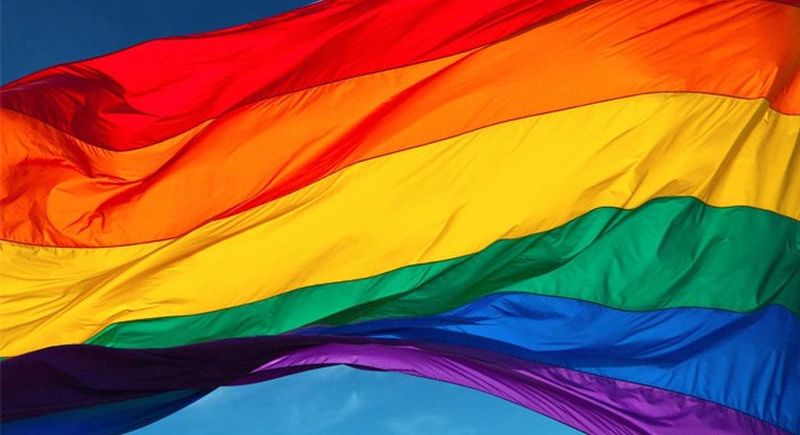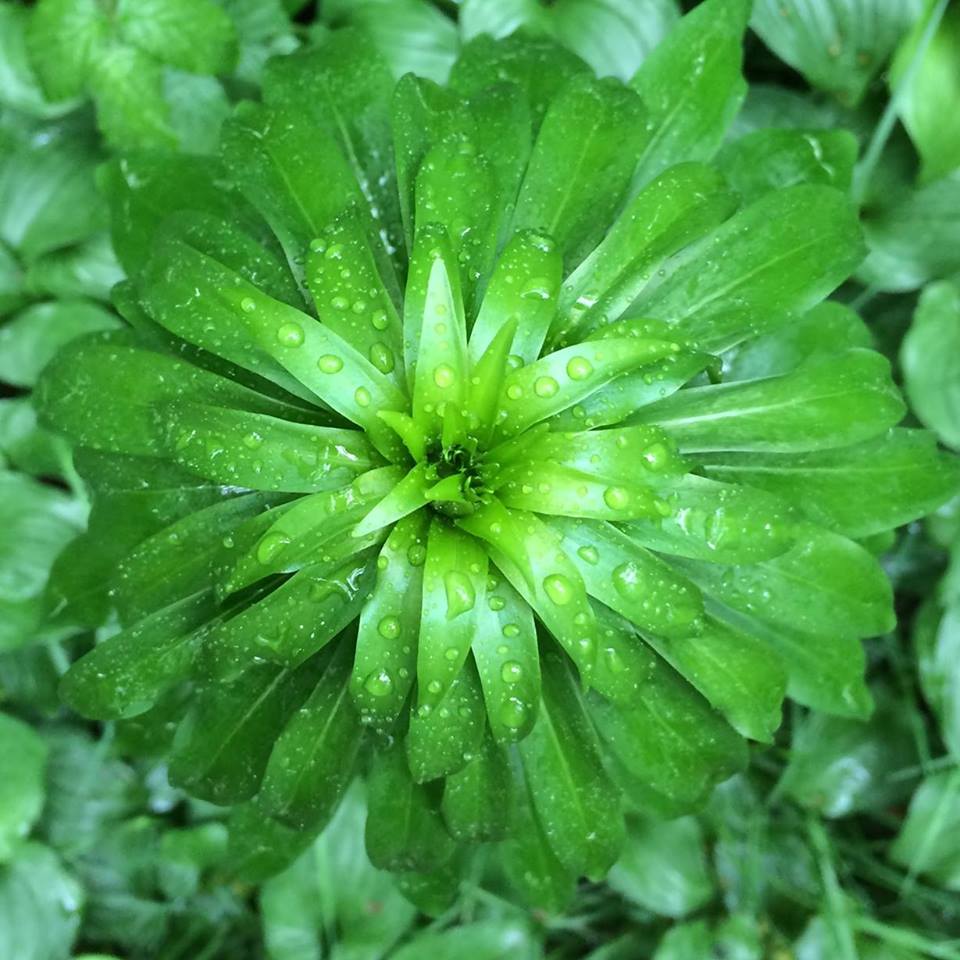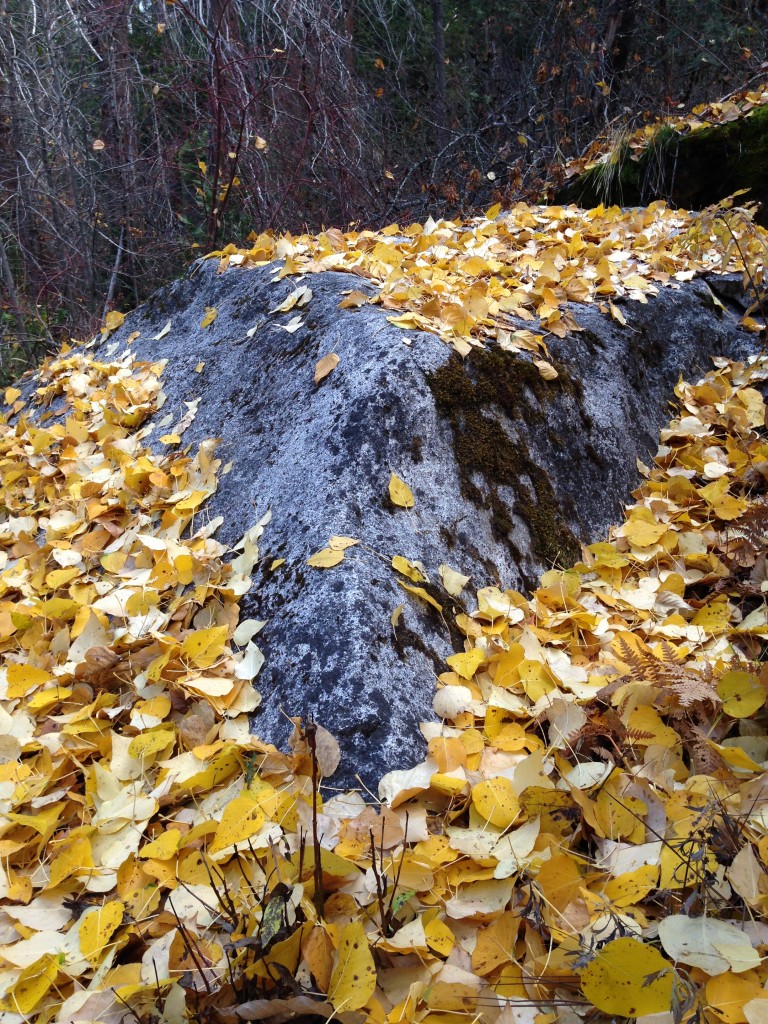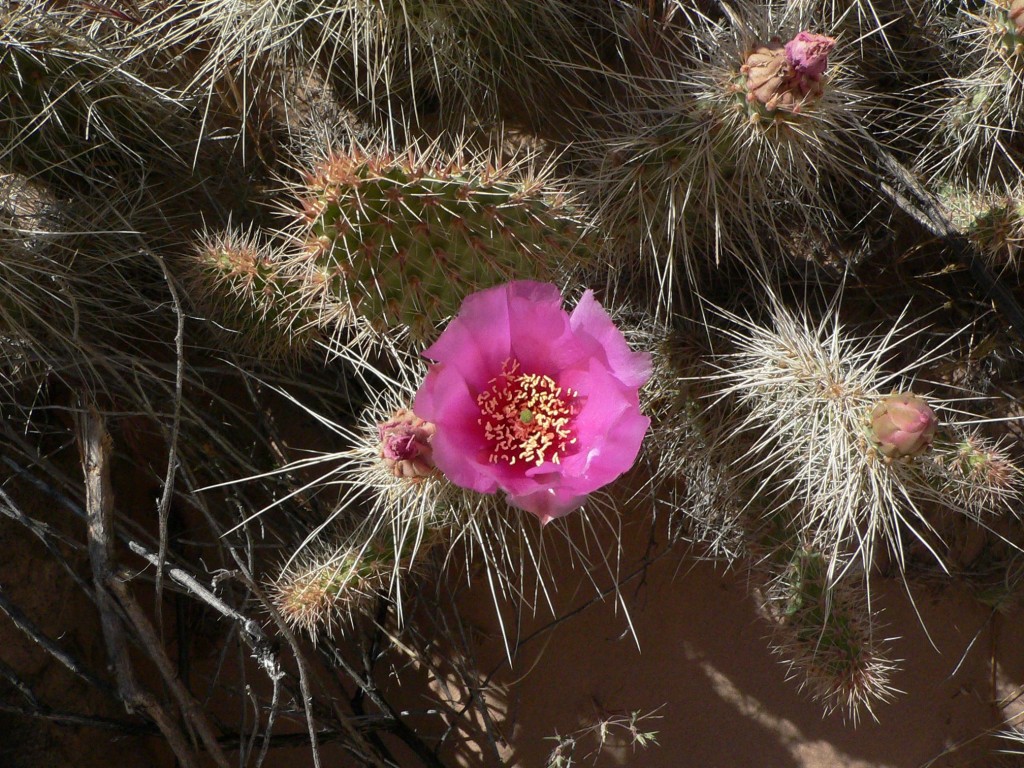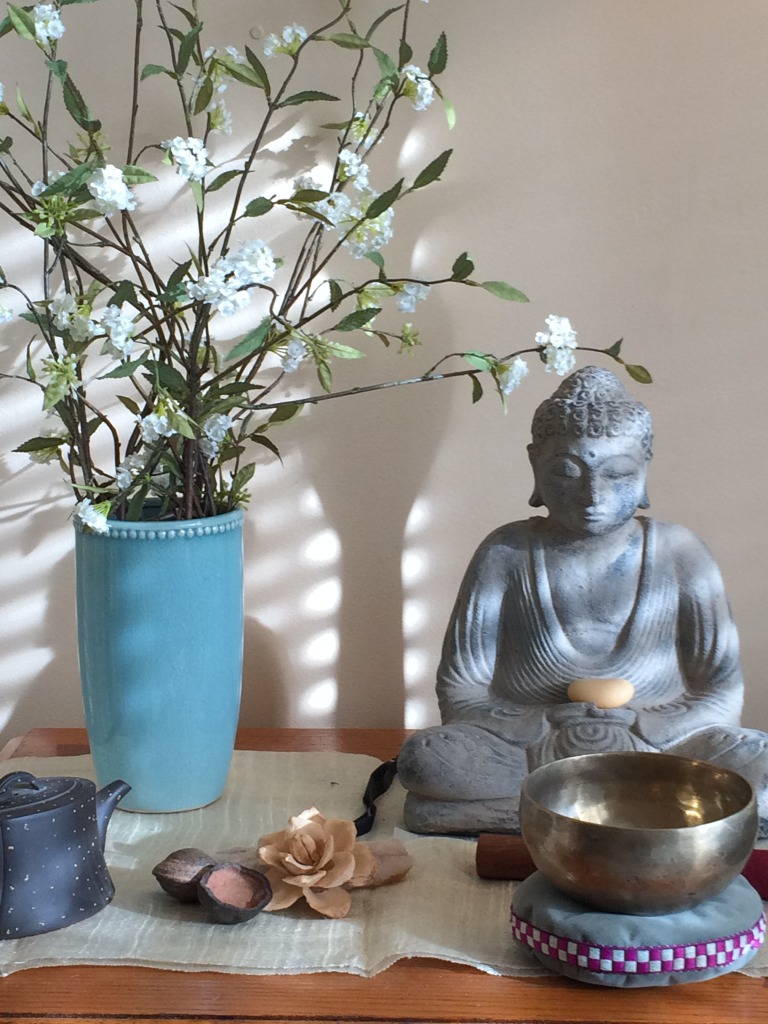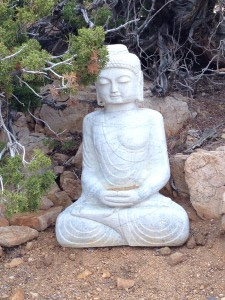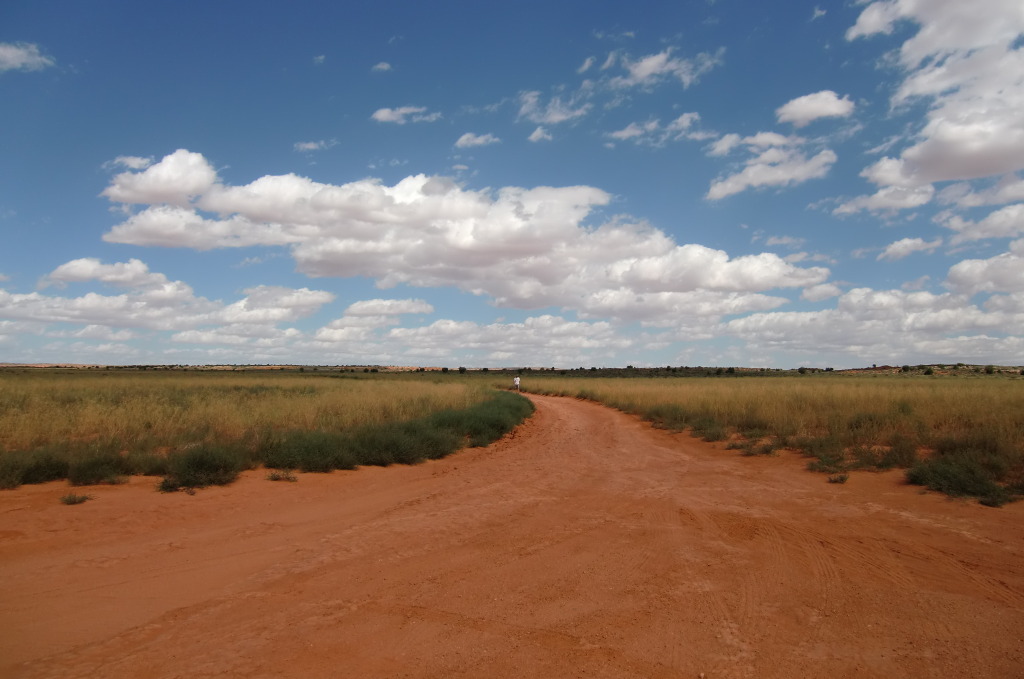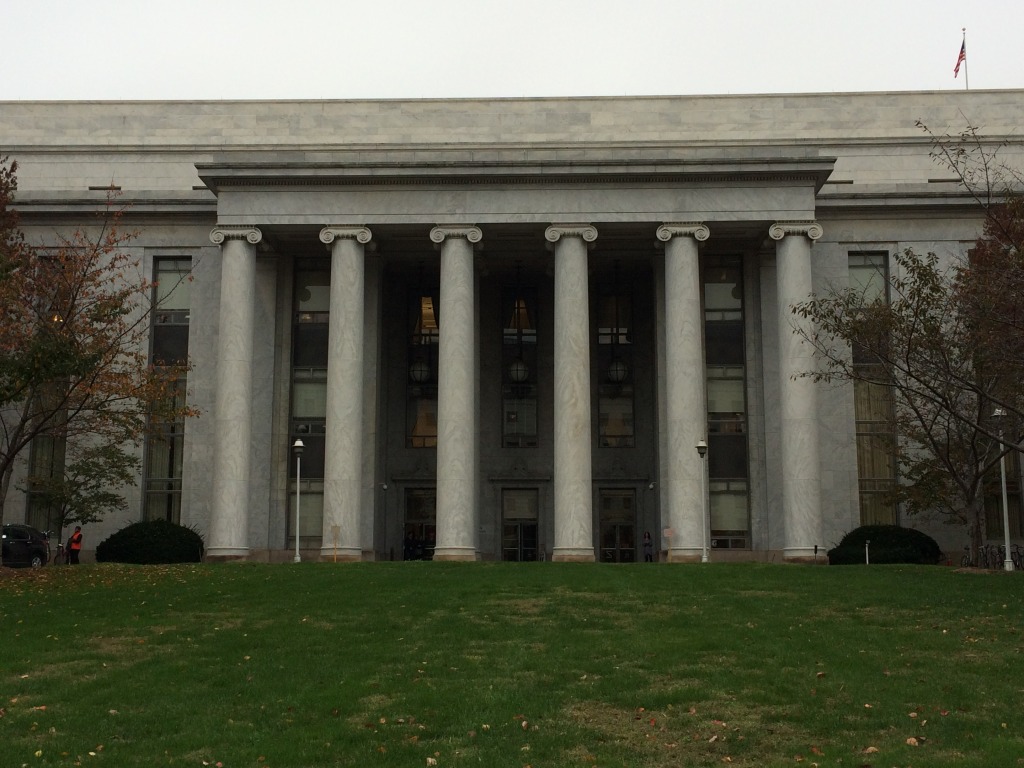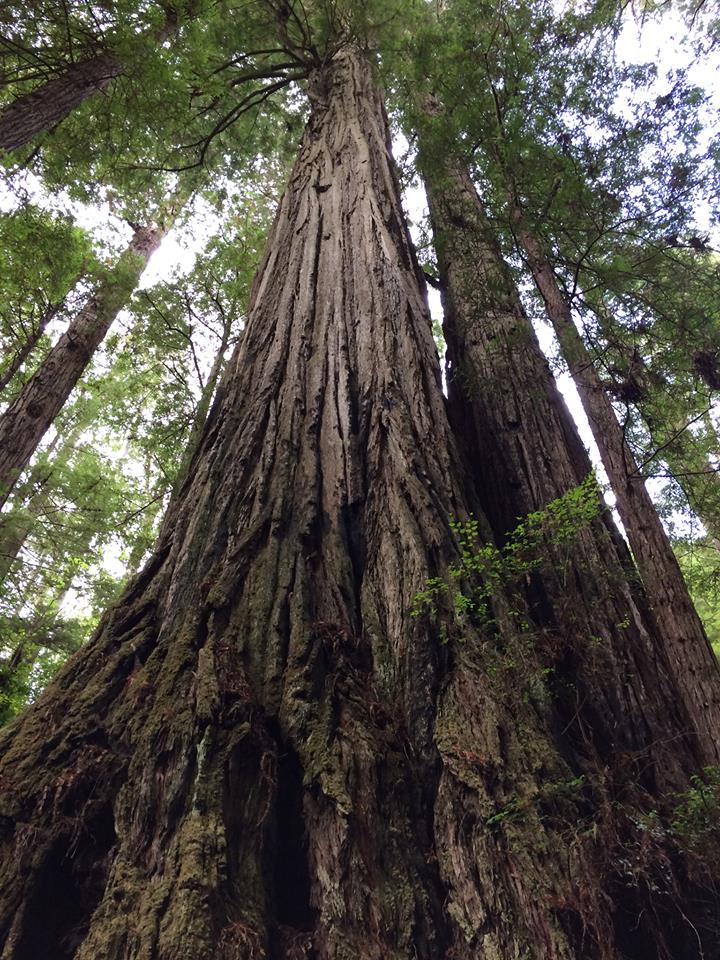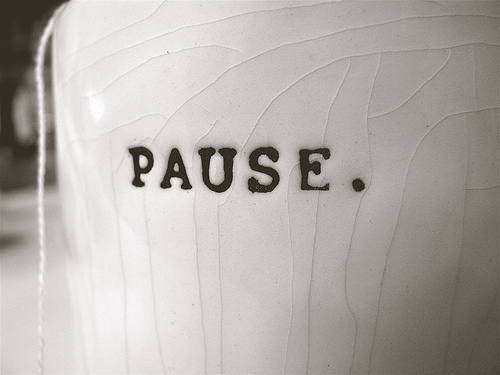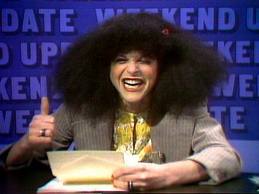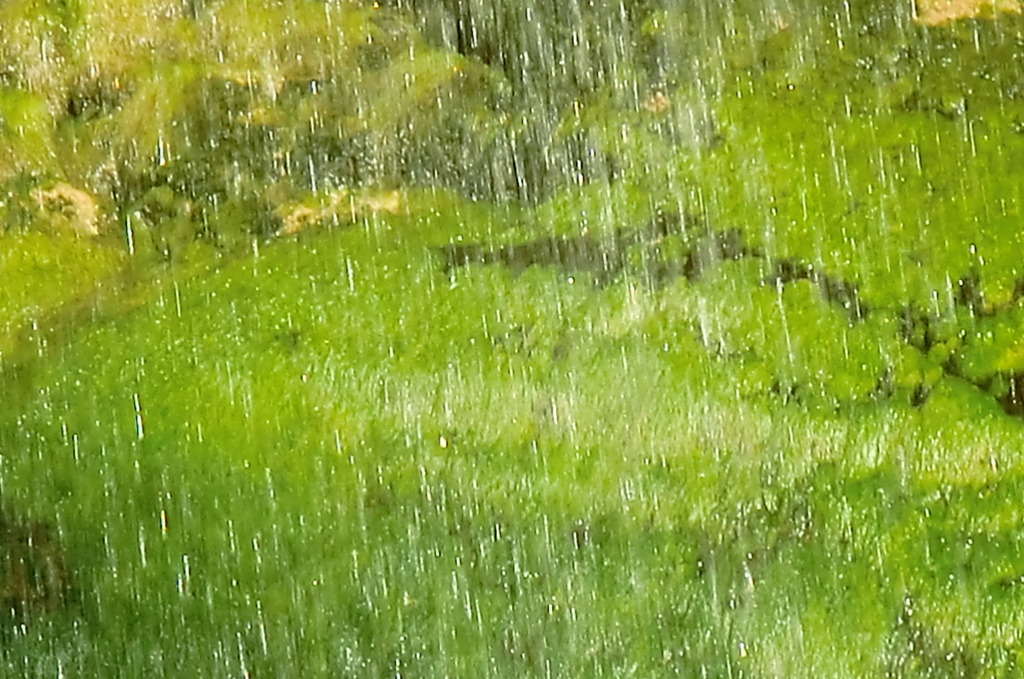Stories & Insights from Mindfulness, Dharma, and Waking Up Each Day
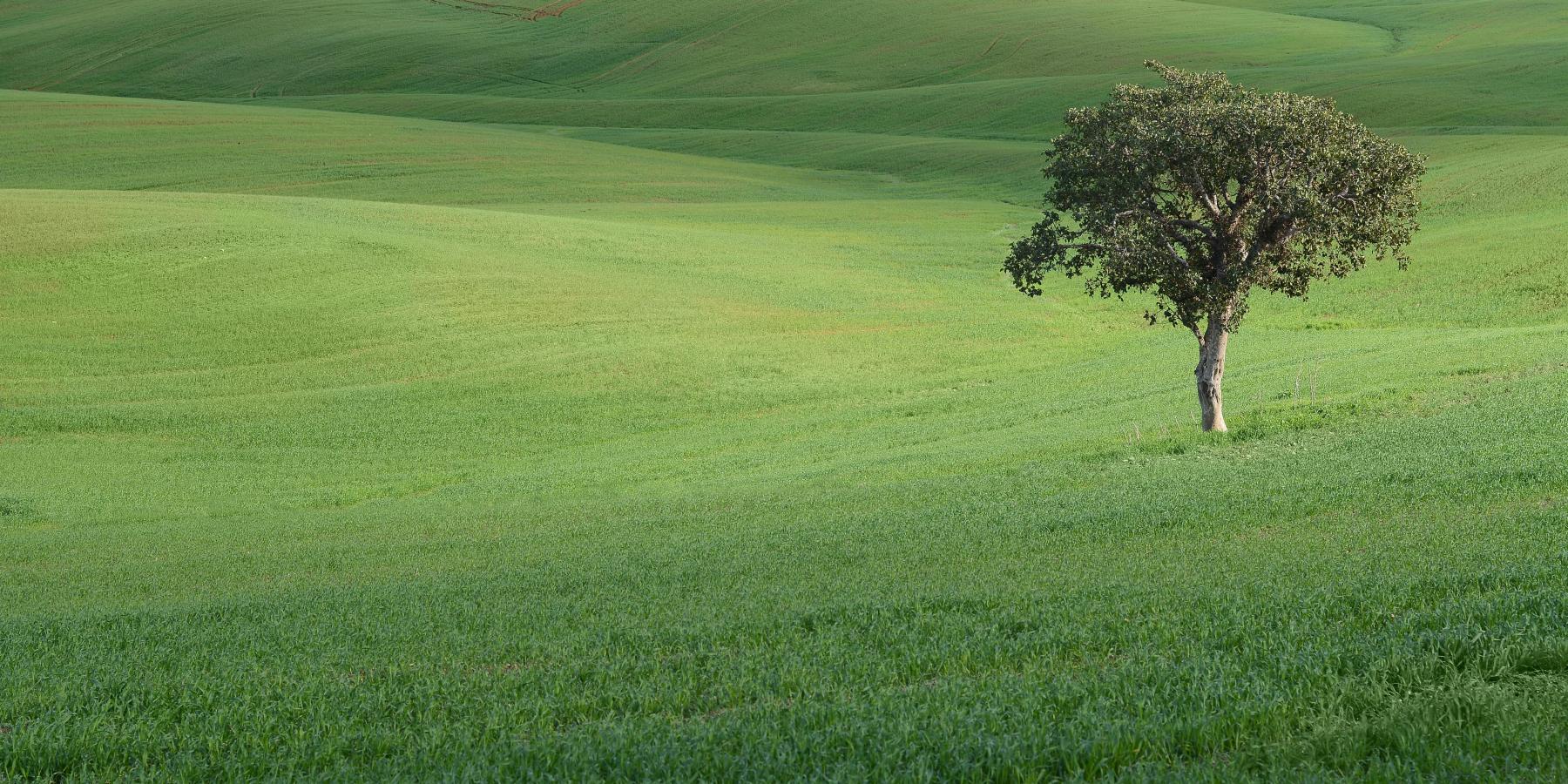
On Purpose
On Purpose
As we enter these darker cooler months of the holidays, it’s easy to get caught in the flurry of consumption. Desire sneaks up and worms its way into our thoughts and informs our actions - sometimes beautiful wholesome thoughts of caring for ourselves and others with warmth, tenderness, and generosity, and sometimes unrelenting thoughts of needing more, or for many of us, intensely wanting things to be other than they are. This is suffering.
Have you ever noticed just how hard we work to get what we want, how much we struggle when we get what we don’t want, and when we do get what we want, how the next desire is right there on its heals? This is also suffering.
One day one of my teachers said, “Remember, struggle is extra.” It was an eye-opening moment. It doesn’t mean we give up working hard for what we deeply care about. It means to keep going, but with a looser grip. As you go into this holiday season, enjoy yourself. Take some time to breathe, read a paperbound book, go for a walk, look up at the night sky.
- In the Jewish tradition, this is the time of year for reflection, renunciation and renewal; the celebration of Rosh Hashanah and Yom Kippur. Reflecting on our lives as they are now, letting go of old hurts by seeking connection and understanding with those we love and even those we don’t, and going forward into the New Year with clarity, kindness and optimism.
During these holidays, it’s traditional to wish each other the blessing of a “sweet new year” and seal it by eating apples dipped in honey. I love that. Whether I receive or offer this blessing, it always makes me feel warm and cared for, and the apples are delicious, too.
In the Buddhist tradition, renunciation is considered a central aspect of the practice. Sometimes we think of renunciation as giving up our luxuries and comforts, stripping down to the bare essentials of our lives into our own definitions of austerity. And there are times when this exploration can help us understand ourselves in new and instructive ways.
I think of renunciation as letting go of the aspects or habits in my life that really don’t support my well-being. This is a cornerstone of practice; showing up for what’s there, seeing it, feeling it, understanding it. Renunciation invites a certain kind of discipline and determination to adjust, and ultimately the freedom to make clear, wise, skillful choices.
This brings up the Buddha’s compass question, “What when I do it, will be for my long-term welfare and happiness?” Inherent in that question are these considerations: what actions can I take that support and benefit both my own well-being and that of those around me? How can I be of benefit in the broadest sense of the word?
As I've explored renunciation as a practice in the context of the Buddha's question, I've come to experience it most strongly as the very natural and uncontrived expression of generosity. And this lifts my heart and strengthens my well-being.
A few years ago my husband gave me a birthday card on the front of which was a beautiful print of a Western Tanager perched on a branch, one of my favorite birds. The caption said “Look Forward Brightly.” I framed the card and it hangs above my desk so I see it every day. Whatever your tradition, I wish you a very sweet year ahead filled with care and kindness, love and hope. Let’s do our best to care for one another and look forward brightly.
It’s easy to be frightened, to feel cynical, to judge and criticize, to feel envy or jealousy, and to generally drop into a place of contention without even noticing. Our culture gives us nonstop messages of needing things to be other. It keeps us seeking the next best thing, rarely supporting the value of stopping, stopping to enjoy the good that is already here just as it is. And especially in this tempestuous political season, it’s crucial to take some time to notice what is actually and already good in our lives. Yes, even and especially now.
Rick Hansen, the neuropsychologist and author of The Buddha’s Brain and Hardwiring Happiness, teaches that the brain has a natural negativity bias - it’s like Velcro for the negative and Teflon for the positive. Our basic survival instinct recognizes and latches onto danger with much greater speed and strength than it does peace, joy, love or even the general sense that things are actually alright. In fact, he often says that when we take the time to notice, we see that we’re almost always basically alright, right now. Think about that. It’s absolutely correct. When we truly stop and check-in in this moment, though we may not be entirely happy or satisfied our basic needs for safety, food, shelter and a companion or two are likely covered.
While we’re naturally wired to sense and react to danger before goodness, we can significantly influence our automatic responses – the negativity bias can be changed. Research consistently shows that by training the mind, we can change the brain.
The Buddha said “what one frequently thinks and ponders upon becomes the inclination of the mind.” For me, I know that if I keep playing the worn out tape of an old painful relationship, what happened, what didn’t happen, I’ll get stuck in the hardened ruts of the story. I’ll likely become sad or resentful, angry or hurt all over again. The repetitive thoughts themselves will strengthen the imprint of the memory in my brain making the negative feelings easy to access, easy feel, cloud my mind and lead nowhere good.
I’ve heard it said that repetitive thoughts are a dead end, and it doesn’t take much rumination to know this is true. When I can recognize those dead-end thought loops, I can more easily stop the habitual thought pattern, recognize it for what it is, and avoid replaying the story.
The same is also true for good memories, good thoughts, and positive experiences - those that nurture and support our well-being and bring happiness. They, too, imprint in the memory. When we deliberately look for the good, take in and recognize joy, happiness, love, a sense of things being basically alright, we direct the mind towards well-being. When we intentionally take the time to let it in and soak it up, we reinforce the neural pathways in the brain that support our sense of happiness.
Give it a try right now. Take the next few minutes to think about your day today. Try to think of something you enjoyed, something that makes you smile even a little bit. Or perhaps take a look around. Do you see something lovely or beautiful nearby? Pause and notice it, let yourself take it in. How does this feel in your body? What about your mind?
No matter what we choose, these moments of noticing goodness are vital to our well-being. By actively supporting and reinforcing our ability to see the good in the first place, new habit patterns take root and grow. Happiness grows, even and especially now.
In 1998 my business partner and I opened Emerald City Laundry, a busy neighborhood laundromat in Arcata, California. Our mission statement said and remains “to be a clean, safe and dignified place for people to work do their laundry.” On the back of the interior door that separates the laundromat from the supply room is a black bumper sticker that reads “Do No Harm” in big white block letters. I sometimes wonder if our employees actually see it and think about its intention, or if it’s one of those signs that they see so often it becomes invisible. I hope not.
Some years ago I got stuck in a conversation with a man sitting next to me on a long flight; I was in the middle seat, of course. Not long into the flight I caught his sideways glance as he noticed I was reading a book about Buddhist practice. I couldn’t help but glance back and noticed him reading a book about Christianity. I didn’t give it much thought until he said “So you’re a Buddhist.” Looking up I said “I don’t know, I’m just reading this book.” I tried to leave it at that, but he wanted to talk. “Well, if you’re not a Buddhist, and you’re reading a Buddhist book, what are you?” I wish I’d been quick, clever and polite enough to say something that would have ended the conversation, but instead I took the bait. “I’m Jewish and interested in Buddhist practice.”
This began his very long exhortation that as a devout Christian white man he understands the plight of the Jews around the world along with all of the other oppressed people from Africa. I don’t think my jaw was visibly on the floor, but given that I was stuck in the middle seat for two more hours, I decided to listen and see if I could understand his way of thinking.
At some point he began talking about God and compassion. That intentionally harming another person under the guise of teaching a lesson, as in “an eye for an eye” is true compassion. And that is when I suggested that we have very different views, and offered to change the subject. No dice. As he continued, I felt the hair on the back of my neck stand up, and I calmly interrupted him and said “Sir, this conversation is over.” He looked at me as if I’d hurt his feelings. I thanked him and went back to reading my book.
When I was in 8th grade in 1973, I played the part of a nurse in the musical production of South Pacific. I can still remember most of the words to most of the songs. The story explores issues of racial prejudice as romances develop between an American nurse and a middle-aged French expatriate plantation owner and father of mixed-race children, as well as a U.S. lieutenant and a young Asian woman. The still incomprehensible massacre in Orlando, the murders of Michael Brown, Eric Garner and Trayvon Martin reminded me of the song “You’ve Got to be Taught.” I vividly remember learning this song for the show and not knowing how to respond. Here are the lyrics.
You've got to be taught
To hate and fear,
You've got to be taught
From year to year,
It's got to be drummed
In your dear little ear
You've got to be carefully taught.You've got to be taught to be afraid
Of people whose eyes are oddly made,
And people whose skin is a diff'rent shade,
You've got to be carefully taught.You've got to be taught before it's too late,
Before you are six or seven or eight,
To hate all the people your relatives hate,
You've got to be carefully taught!We are still taught to fear, to demean, to judge and to hate even though we know that hatred begets hatred, that ignorance begets ignorance, and violence certainly begets violence. It’s frightening to acknowledge the ways we reject one another, the ways we cause harm both intentionally and unintentionally.
Let’s wake up and look into the painful, complex and deeply ingrained culture of racism, fear and intolerance in ourselves, our communities and the wider culture. Let’s study the meaning of “Do No Harm,” so we can courageously say “The violence stops with me,” and admit that we all live in each other’s backyard.
♦♦♦♦♦♦♦♦
May all beings be cared for and loved,
Be listened to, understood and acknowledged despite different views,
Be accepted for who they are in this moment,
Be afforded patience,
Be allowed to live without fear of having their lives taken away or
their bodies violated.
May all beings,
Be well in its broadest sense,
Be fed,
Be clothed,
Be treated as if their life is precious,
Be held in the eyes of each other as family.
May all beings,
Be appreciated,
Feel welcomed anywhere on the planet,
Be freed from acts of hatred and desperation including war, poverty,
slavery, and street crimes,
Live on the planet, housed and protected from harm,
Be given what is needed to live fully, without scarcity,
Enjoy life, living without fear of one another,
Be able to speak freely in a voice and mind of undeniable love.
May all beings,
Receive and share the gifts of life,
Be given time to rest, be still, and experience silence.
May all beings,
Be awake.
~ Rev. Zenju Earthlyn Marselean Pierre-Manuel“The very least you can do in your life is figure out what to hope for. And the most you can do is live inside that hope.” – Barbara Kingsolver
I recently attended a memorial for Theo, a man who had a big community, was deeply loved and is deeply missed. On one of the large white walls at the memorial was a huge photo of Theo – as big as his personality with wind-blown hair, glasses sliding down his nose and biting his ever-present cigar stub while looking back over his shoulder as if to say “Nice gathering!” The afternoon of shared stories was heartwarming, poignant and sad. There was also a lot of joy and delight, including stories that made us laugh so hard we cried. Here in Northern California we've been blessed with a very rainy winter and are now enjoying an especially verdant and lush spring, my favorite time of year. Yet in the midst of this gorgeous riot of fresh new life, I am struck by its tenderness, its fragility, the raw truth that all of it and all of us are utterly temporary. The imperative in the Zen teaching to "practice as if your hair is on fire" is no joke. Wake up! Today is the only today you've got, there is no other time. There’s no doubt that as we age, we go through repeated cycles of illness and health, loss and birth, sorrow and joy, and even cycles of hope - the many ways we hope for more of this or less of that. If we pay attention, we see this everywhere in the natural world – from the unfurling of the Fiddlehead Fern in the Spring, to the loss of millions of acres of pine forests to Bark Beetles, to the newborn fawn bouncing effortlessly across the pasture after its mother - all of life surrounds us all of the time. Here is a list of questions I use to spark my practice and keep me connected to my life, especially when things feel flat, dull, or uninspired. All of these questions provide a lens through which to examine our habit patterns, decisions, outcomes, and help clarify our motivation and intentions. I think of them as compass questions, questions that steer the course. See what you think.
- What, when I do it, will be for my long-term welfare and happiness?
This comes directly from the Buddha and is one of my favorite questions. I use it a lot. It accesses my deepest wisdom, and helps me avoid impulsivity and the potentially unintended or harmful consequences of reactivity. It leads me most often to the appropriate response.
- What makes you come alive?
This question comes from Howard Thurman, the 20th C African American educator and civil rights leader who is famous for telling his students, “Don’t ask what the world needs. Ask what makes you come alive, and go do it. Because what the world needs are people who have come alive.” Spend a little time considering this for yourself. You may rediscover some forgotten joys, things you'd like to put back into your life, or maybe even feel inspired to learn something new. Now is the time.
- What evokes your reverent heart?
We stand in reverence when we have those experiences that take our breath away, those times that we’re stopped in our tracks from an experience of beauty, joy, love or peace. I have a sense that the connection we feel at those moments are among the deepest and most profound. By staying connected to our reverent heart, we live with great respect and dignity for ourselves, others, and the natural world.
- “What has become clear to you since last we met?” Ralph Waldo Emerson was noted for greeting his friends this way. I love this question because it expects and challenges us to keep learning.
And now if you’re wondering how to even make time to consider these questions, try going for a silent walk. Wherever you live, go outside and walk for a while. Try for at least 30 minutes. If you can go somewhere quiet, that’s even better. Leave your cell phone behind. As you walk, feel your breathing, your feet on the ground, notice colors, smells, birdsong, the air on your cheeks. Periodically stop and look around. Just notice. Getting out for an intentionally quiet walk creates space in the mind and heart, calms the nervous system and just plain feels good. Best of any song is bird song in the quiet, but first you must have the quiet. - Wendell Berry, "A Timbered Choir: the Sabbath Poems"
What does it mean to steal? When a person steals is she a thief? What does it mean to be a thief? Are there culturally accepted forms of thievery? Are certain categories of theft exempt? Is there anyone who has never taken anything that was not freely given? When and how do we cross the line? Who’s to say where the line is anyway? The day after Thanksgiving I received a call that $100 had gone missing from my store while we were closed for the holiday. It likely had dropped from an unknown customer’s pocket, and it was found by our newest employee, Luke, who did not yet know the protocol for this kind of event. Luke called the store first thing Friday morning to let his co-worker, Bob, know he’d left the cash wrapped in blue gauze tape on a backroom shelf, and to ask what he should have done with it. Bob looked for the money, but couldn’t find it anywhere. All he found was the empty ring of blue gauze tape in the trash beside the shelf. That’s when I received the call. My mind immediately quickened – who did it, when and how, but mostly I thought, “Now what am I going to do?” The only people I knew who would have been in the store over Thanksgiving were the floor maintenance people, and I did not want to believe it could have been them. They had been maintaining our floors for nearly 15 years and I trusted them. I was thankful that the security cameras would give me the information I needed to deal with the situation supported by facts, not suspicions. After reviewing the video, my heart sank. It was not the floor guys, it was Susan, one of my most skilled and reliable employees - a person with deep friendships among the staff, whom customers love, whom I love. It felt terrible. I felt terrible. The video showed that she’d come in the back entrance and helped herself to some folding chairs we keep for staff meetings. It was Thanksgiving Day and she was having a party. After she took the chairs out to her car, she came back in to turn off the lights when she clearly paused, I imagined noticing the cash left out on a shelf. She then turned the lights off and quickly exited the store. It would seem natural that the zero tolerance policy I have for drugs and alcohol on the job would also include theft, but it doesn’t. As a small business owner of nearly 30 years, my first inclination was that I needed to act swiftly to protect the business and fire Susan right away. But my mindfulness practice and my ten years’ experience teaching mindfulness told me to wait, to take some time to get more clarity about my intentions and what was truly best for all of us – me, Susan, the staff and the business. What did I know to be true? What was the right action to take? Despite my painful feelings of incredulity and betrayal, there was something about firing Susan that just didn’t sit right with me. Was it that I held her is such high esteem that I wanted to give her a pass? Was it that she played a critical role in the store and her immediate replacement would send shockwaves of disruption through the staff? Was it that staff change is costly to the business and I was weighing the impact on the bottom line? How do I define a healthy bottom line anyway? Or was it that I suspected a moment of impulsivity and rotten judgment, not a habitual tendency that had led Susan to take the money? Was my belief in our fundamental decency getting in the way of seeing her clearly? It was probably some of all of that. I found myself weighing how much harm was actually done, and how do I even quantify ‘harm’? When I met with Susan the following day I made certain my manager joined us for the conversation. Having an extra set of ears and eyes is essential for objectivity, clarity and fairness. I had decided on a plan to give Susan the facts as I knew them and let the conversation unfold from there. My hope was that she would tell me that yes, she was there, she had borrowed the chairs without permission, and had taken the money from the shelf. My plan was also that if she denied it, I would end her employment. Truth be told, I really did not want to fire her. I had a strong feeling that she would benefit much more over the long run by keeping her job and doing the work to re-establish trust. And so would I. The conversation went just as I’d hoped. Initially Susan said she was only there to borrow the chairs and didn’t see any money, but when I told her what was on the video and that we’d found the blue gauze tape in the trash, she briefly looked away, took a breath, then turned toward me and admitted she’d taken it. She was sincerely apologetic, spoke with embarrassment and remorse and immediately handed me the $100. I was relieved and even a bit proud of her for acting with what felt like genuine humility and authenticity. Next I asked her how she thought we ought to proceed. If she were in my shoes, what would she do? Susan paused, and then re-iterated how much she loves her job and wants to keep it. She thought it would be good not to allow her to work for a few days. I thought that showed some wisdom on her part especially because I had already taken her off the schedule temporarily. I appreciated that we were thinking alike. In addition, I asked her to return her store key and rearranged the schedule so she would not be alone in the store when she returned to work. I then looked her in the eye and told her I was pleased and relieved she had told me the truth because I believe her to be a very decent human being, who like the rest of us, experienced a moment of complete mindlessness. She smiled in her vulnerability and thanked me for believing in her. I also asked her to prove me right - that taking the risk to continue her employment was a risk worth taking. A few days later after she’d taken some time off, Susan called me to say that she was at work, and that she understood I didn’t want her to be alone in the store, but one of her duties that day was to cover a break for her co-worker and what should she do. “Susan, I want you to be your best self. That’s it. Be your best self.” I think this is what mindfulness helps us do. It helps us see clearly enough to make good enough decisions most of the time. When we intentionally connect our ethical practices with our mindfulness practices, what we do in the world becomes a reflection of who we are. And when we act from this place, we are far less likely to cause harm either to ourselves or to anyone else – we’re our best selves. We embody the truth that by caring for ourselves we are caring for others and by caring for others, we care for ourselves - the most important bottom line of all.
As a destructive force there is nothing as strong as anger. An instant of anger can destroy all the positive actions…Indeed there is no fault as serious as anger. Patience, on the other hand, as a discipline that neutralizes and prevents us from succumbing to anger, is unrivaled. Through it, the suffering we endure from the heat of the negative emotions is relieved. It is therefore of the utmost importance that we resolve to practice patience, gaining inspiration through reflecting on its advantages and on the terrible effects of anger. – His Holiness the Dalai Lama
This fiery season of the presidential primaries has reached a level of anger, hate, intolerance and bullying unlike anything I can ever remember. A current of fear is growing in me and I wonder where our sense of decency has gone. Sometimes I feel utter resignation and want to disappear into the quiet of my life hoping this will all just go away and everything will be fine – the way I want everything to be. We really are all alike – wanting things to be the way we want them to be. Yet it’s frightening to think that the way things turn out might actually depend on who can incite the most fear, the most anger, and scream the loudest.
Recently when I ran into a friend at the farmers’ market, she said “Wow, I haven’t seen you in such a long time! Where’ve you been? Some other country?” I hadn’t been, but in some ways it felt as if I had. I live in a very progressive small town in northern California, and I had just returned from visiting family in a very conservative small town in Wisconsin - in fact it was rated by Business Insider the most conservative in the state. It’s a lovely setting along Lake Michigan; the cottage at the end of the wooded gravel road sitting just a few steps from the beach, the lake’s vast horizon, the endless color changes and the perpetual gentle shushing of the water on the shore.
In the summertime, family dinners on the screen porch are the norm with at least ten of us at most meals, from grandchildren to grandparents along with any neighbor who happens to wander by. The conversation commonly includes the latest news of friends, the varying health ailments at the table, and the on-going efforts to maintain some semblance of a beachfront in the face of unstoppable natural forces. Eventually, the conversation always circles around to politics, and we tenderly avoid the galaxy-sized black holes between our views.
During dinner on the day of our arrival, my mother-in-law, sitting at the head of the table, made a very matter-of-fact comment about white supremacists in Idaho. I, equally matter-of-factly, said I thought there also were a lot of libertarians in Idaho. Without skipping a beat, my father-in-law reared back from the opposite end of the table and said “Hey! Wait a minute! I’m a libertarian. So you think I’m a white supremacist?” Oops. “That’s it!” said my mother-in-law in her incisive let’s-keep-the-peace voice, instantly putting a stop to the conversation. And that was the end of that, until about five days later.
It was a tranquil and beautiful morning walk along the paved cattail-lined path, ponds on either side, and in the distance the biggest American flag imaginable waving high above everything; each stripe alone was 13 feet high. I’d never seen anything like it. My father-in-law was talking with my husband about the growing Muslim population in the community, Islamic laws and customs, and the general culture of fear around Muslims that was spreading far and wide. Despite the growing outrage welling in my gut, I decided to keep quiet, stay out of trouble, enjoy the scenery and just listen. A little walking meditation - just walk and listen, I thought, breathe, walk and listen.
I was feeling pretty proud of myself for keeping quiet, a little lost in my own thoughts, when my father-in-law turned to me and said “And what about that comment you made the other day.” In a heartbeat, I felt myself take a breath as I gingerly and steadily stepped across the galaxy and into the morass. I started by apologizing for giving him the wrong impression, and assured him that I do not think of him as a hateful white supremacist. I was relieved when he accepted my apology with a tip of his head and slight smile. Then he asked me if I knew that Webster’s defines him as a heathen – as someone who does not believe in God. “ Well, maybe you don’t have to believe in Webster’s.” I said, and got a bigger smile.
As we walked, he talked more about libertarianism and the Constitution, baiting me to challenge his way of thinking. It was clear that neither one of us really wanted to cross the great divide to the other’s side of the black hole; but this is my husband’s father, my children’s grandfather, a man I’ve known for 30 years, and I love him.
So I stopped, looked him in the eye and said, “You know, we’re so loyal to our opinions. How would it be if we suspend our loyalties long enough to ask ‘Would you be willing to tell me what you mean by that?’ Can we talk with each other with curiosity and let our knee-jerk assumptions go for the moment?” “Of course you and I can do that,” he said, “but the rest of the world can’t.” “Well,” I said, “let’s just you and I try.” He looked at me a little quizzically and I said, “You know that mindfulness stuff I was telling you about? The stuff I teach? This is how it works.”
And in that moment, something between us shifted and softened, leaving both of us feeling a little triumphant. For the rest of the visit we didn’t talk about politics or anything else too controversial. On the quiet early morning of our departure as we said good-bye, this lovely man of 82 looked at me, gave me a hug and said “We did good, didn’t we?”- The other day I was walking on the beach with a dear friend who in recent months had lost a considerable amount of weight. She was both startled and excited when she realized that all of her pants were suddenly way too big. It was a peculiar feeling; one of tenuous pride, success, and satisfaction that came with a sense of fear and unfamiliarity with her own body. Everything looked new and different and unknown. The morning was crisp and clear, the calm ocean sparkling in the sunlight, the vast beach was nearly empty. Perfectly beautiful. At some point a man passed us going the other way and as he approached, my friend said “At least he won’t think I’m fat.” We both came to a stand-still, stunned at what she’d just said, recognizing the painful depths from where that came. It didn’t matter that I think she’s always been perfectly beautiful. It didn’t matter that her husband of many years sees her perfect beauty in everything about her, including the roundness of her belly and puckers on her thighs. It didn’t matter. The ancient voice of doubt and self-criticism was alive and well rearing its ugly head. In Buddhist lore, Mara is the tempter, the one who personifies unskillful and unwholesome impulses, the evil one. Mara is the one who does everything he can to convince the Buddha to give up his quest for awakening. As the Buddha sat under the Bodhi tree determined to meditate until he became enlightened, Mara sent his three daughters to seduce him and try to break his concentration. With each temptation and distraction, the Buddha said “Mara, I see you. I am not afraid.” Finally, it is said that when the Buddha became enlightened, Mara was swept away by a great flood. But the Buddha’s awakening wasn’t the end of Mara. He appears over and over again in the Buddha’s life because like us, the Buddha was human. And like us, he faced the challenges of living a human life. In our contemporary culture, Mara is the internalized voice of our conditioning that keeps us stuck in the grips of our old stories, the ones that bind us and shut us down. Recognizing Mara is tool for looking at the parts of our lives that scare us, hinder us, deter us, confuse us, and keep us from believing and trusting in our fundamental decency and innate wisdom. The truth that we are valuable, lovable and precious just as we are, that we have enormous capacities to grow and change and flourish for our whole lives is at the heart of our practice. When the voices of doubt, fear, confusion or self-judgment surface, try saying to yourself “Mara, I see you.” It really may help you see things for what they are and quiet the storyline before it hijacks you completely. If you can also say “I am not afraid,” because in this moment you are actually not afraid your clarity and courage will kick Mara’s ass. Watching the moon, At dawn, Solitary, mid-sky, I knew myself completely: No part left out. - Isumi Shikibu
- Mindful this, mindful that. Are you starting to roll your eyes every time you hear the word? Or does it help brighten your awareness as you go through your day? For me, it’s both. I do appreciate the reminder to bring patience, curiosity and care into my day. I know how important this is and I know, without a doubt that mindfulness practice changes lives for the better. And, from my perspective as a mindfulness teacher, I wonder if such widespread use of the phrase has caused it to be misunderstood, undervalued, or simply become the latest fashionable expression to enter our language. But what does it actually mean? Mindfulness is about becoming fully aware of whatever is happening right now, whether we like it or not, whether pleasant or painful and learning to find some ease even within difficulty. We willingly cultivate more and more curiosity to gain a more refined understanding of ourselves and the world around us. As our awareness develops, our tolerance and resilience expand, and little-by-little the mind’s habitual patterns of unhealthy judgments and internal criticism diminish. In its broadest terms, mindfulness increases our capacity to skillfully manage our lives just as they are right now. The practice of mindfulness starts with meditation, is supported by meditation, and requires meditation. One friend recently asked me how to even begin. It can feel daunting, but you can try it right now. Just sit down and breathe. Start here. Let your eyes gently close…Feel your body touching the chair... Notice the sense of pressure as gravity helps you relax into sitting... Just notice... Now feel your breathing... Simply notice the inhale and the exhale. Try this for a few minutes. That’s enough to start. Just sit down and breathe. Over time, we begin to see that meditation practice not only shines the light on what’s happening in our minds, but it also lets us see what is not happening. And this is an important distinction. Whatever is present in the mind – delight, excitement, calm, sadness, anger, anxiety, loneliness, etc. – will also be absent from the mind. We start to know from our direct experience that thoughts, moods and emotions come and go. The awareness of their presence or absence is precisely what develops mindfulness and gives us the freedom to respond to our experiences with care and wisdom. Here’s an excerpt from the current issue of Tricycle, the Buddhist Review. To you who are out of your mind trying so hard to attain peace of mind…You lack peace of mind because you’re running after an idea of total peace of mind. That’s backwards. Be attentive to your mind in each moment, no matter how unpeaceful it might seem to be. Great peace of mind is realized only in the practice within this unpeaceful mind. When dissatisfaction is finally accepted as dissatisfaction, peace of mind reigns. -Zen Master Kodo Sawaki Roshi (1880-1965) And from my favorite poet, Wendell Berry… Sit and be still Until in the time Of no rain you hear Beneath the dry wind’s Commotion in the trees The sound of flowing Water among the rocks, A stream unheard before, And you are where Breathing is prayer.
- Here it is, the turn of the year - an ending and a beginning. For me it’s a new view, like coming around a gentle bend in the road. It’s a lovely time to pause, catch my breath, reflect on the last year and get ready to begin again. Take a moment to remember some of your own experiences of the last year, what stands out? The joys and sorrows, the successes and difficulties, the ways you’ve changed and have been changed. It’s extraordinary what happens on any given day in any of our lives, let alone a whole year. As I consider what it takes just to manage my own life and then multiply that by 7 billion people around that planet, not to mention all of the non-human living beings, the amount of life lived everywhere in every moment is mindboggling. As the days begin to lengthen and we move forward into the New Year, I like the feeling of settling into the ground of my life. What’s going well? What could use some attention? What can I let go of? It’s a natural time for renewing or setting some intentions. Not resolutions or goals necessarily, but intentions. Unlike goals, which can be achieved, intentions are a compass setting – we set our course in a direction and live our lives accordingly. It’s like moving towards the horizon, taking one step at a time with the patience, curiosity and courage to see and feel what’s here on this day, in this moment. We make adjustments as we go, yet we keep the horizon in sight. Suzuki Roshi, the founder of San Francisco Zen Center was once asked, “Roshi, what’s the most important thing?” and he answered, “To find out what’s the most important thing.” How do we want to live? We make this choice every day. And we also need a little help. Central to Buddhist practice is what is known as “taking refuge,” refuge in the sense of both resting in and living from a reliable place of safety, support and clarity, and a place that stimulates and nurtures our growth. Traditionally, one formally takes refuge in the Buddha, the Dharma and the Sangha as an aspect of practice that re-affirms one’s commitment to the practice through chant, spoken word or silently . Some people take refuge every time they sit to meditate, others at periodic intervals. The New Year is a wonderful time to be reminded of this practice. Taking refuge in the Buddha does not mean to worship or idolize the literal historical figure of the Buddha. But rather to recognize that like the Buddha and all of our teachers, we too, have the capacity to access and cultivate our very real innate wisdom and compassion. We can live a more skillful life by not adding undue suffering to an already complex and challenging life. This is what is thought of as waking up, and like the Buddha, we can do it, too. The Dharma is classically defined as the teachings of the Buddha. But dharma itself is simply the way things are, the truth of how it is. So we take refuge in the Dharma through our practice of training ourselves to see our lives as they are. The Sangha is our community; our family, our friends and our spiritual communities, those groups that provide fundamental support. Whether you practice meditation with others, belong to a synagogue or church, ride your bike or paddle your kayak with friends each week, this is your sangha and perhaps the most important of the three refuges. We are undeniably interconnected and we need each other to thrive. Another Japanese Zen teacher, Kobun Chino Roshi said “The more you sense the rareness and value of your own life, the more you realize that how you use it, how you manifest it, is all your responsibility. We face such a big task, so naturally such a person sits down for a while.” And so we begin again. We come back to ourselves, to our practice, to our lives and the ground of our being to discover the most important thing. We round bend, see the horizon, and settle in to do the best we can.
Last month I had the pleasure and honor of teaching the weekly meditation group in the Congressional Offices in Washington DC. This group was started a few years ago by Congressman Tim Ryan of Ohio - a long-time meditator, a serious and committed proponent of mindfulness, and the author of A Mindful Nation, a great exploration about the ways mindfulness can change our culture. As mindfulness and meditation become more mainstream and the benefits of developing mindful awareness become widely known, it’s perfectly natural that even members of Congress and their staff are meditating.
At the end of the class I invited feedback and after a fairly long pause, one man broke the shy silence and said, “I feel great!” Then another person asked how to bring the balance, focus and clarity developed in meditation into the regular course of one’s day. This is perhaps, one of the most important questions of all. If we don’t bring the fruits of the practice into our daily lives, then we’re missing the point of meditating at all. In fact, as one’s practice becomes a regular and integrated aspect of one’s life, mindfulness becomes not something we necessarily do, but something we more naturally are. It informs how we see the world, how we see our own lives, and it slowly becomes our default way of seeing and being. It gives me hope that mindfulness has made its way to the highest level of government. May it soak in and support our elected officials and their staff to make wise decisions from the ground of balance, focus and clarity. Here are a few practices to bring into your day. Mindfulness of Food:- Notice your food. When you sit down to eat your next meal, take the time to really look at it - its colors, textures, shapes and aromas. Then think about where it all came from – where it was grown, how it was farmed and by whom, all of the distribution and supply chains necessary to get this food from its origin to your kitchen and onto your plate.
- Taste your food. Take a bite and put your fork down until you’ve thoroughly chewed and swallowed this bite. We’re so habituated to have the next bite of food ready to go in our mouths before we’ve barely chewed the first bite that we stop noticing its taste. And it's this kind of mindlessness that can lead to overeating as we’re oblivious to the sensations of satisfaction and satiation.
- Recognize satisfaction. There’s a wonderful teaching from the Buddha that invites us to eat only until we’re five bites from full. But how do we actually know? We have to slow down and pay attention to the sensations and the direct experience of eating. When we do, we get to know what satisfaction feels like which helps us redefine our sense of enough. We learn that being stuffed to the gills is unpleasant and unnecessary. We can apply Five Bites from Full to all of the ways we consume – food, drink, the media, our shopping habits, time cruising online, spending time alone, spending time with others. Recognizing satisfaction develops balance.
- Notice wanting. The holidays are a supremely seductive time to indulge in our endless desires and notice how it shows up and takes hold. Start with just noticing when it comes up. What are the triggers? Can you feel it in your body? What is your mind telling you? Just notice.
- Fulfill this wanting. Once you’ve satisfied your desire notice how this feels in your body and your mind. Is there a sense of relief? Does it make you happy?
- Let it go. Forget about noticing desire. Go back to your daily routine. How long does it take before a sense of wanting comes back around? It’s endless.
Here we are in the sick and tragically familiar shock, outrage and despair from the violence of hate and intolerance that occurred again in Paris, and is occurring every day in places like Burma, Kenya, Syria, Lebanon and right here in America, in our own back yards. Once again we are witnessing how dangerous and wrong it is to hate. We need to be reminded of Martin Luther King, Jr. and Gandhi who courageously insisted upon non-violence, tolerance, and compassion along with their deep belief in our fundamental human decency and their unwavering insistence of how right it is to care. These teachings are ancient and timeless and we need them right now. Like earlier this year, the crowds of people courageously filling the streets of Paris send the same message. Violence is profoundly wrong and the right, most wise response is to show up and demonstrate the rejection of hate and the absolute necessity to care. It is our most natural response to pain. We are, after all, wired for compassion. And we have a choice. When we’re faced with pain and difficulty of any amount, whether internal or external, we can retaliate against ourselves or others by turning away and pulling our heads in like a turtle, or by lashing out and continuing the violence. Alternatively, we can stick our necks out, turn towards it, be willing to see it, feel it and do something about it. Certainly it takes some skill to sense the right time and place for stepping into the muck, but choosing action over inaction is ultimately what’s necessary, even if the wisest most effective action itself is inaction. It sends the message “I care and the violence stops with me.” The Buddha taught that the obstacles to acting from our inherent decency are greed, hatred and ignorance, known as the “three poisons.” They are the cause of our individual, interpersonal and collective pain and suffering. Greed is easy to see outside of ourselves, but more difficult to see inside. It’s difficult to come face-to-face with the myriad ways desire and wanting keep us running on the gerbil wheel. It can be blatantly obvious or amazingly subtle. Because our consumer culture is pervasive and invasive, it requires steady discerning mindfulness to manage our desires, to understand them as transitory, to know what is enough, and to guide our actions. Hatred or ill-will is also quite easy to see outside of ourselves, especially when it results in terror and large-scale acts of violence. We can’t miss these external expressions of discontent, fear, intolerance and anger in our communities. Internal hatred, ill-will and intolerance can be much more difficult to see. Each time I feel aversion to whatever is happening, the way I talk to myself is key. If I carry on with indignation I am more likely to churn up misplaced anger which ties my mind in a knot, keeps me from seeing clearly, and if I’m not careful, acting in a less than kind manner. But if I can understand my discomfort, my dislike or my fear, I still may get angry, but I’m more likely to manage it without causing undue harm to myself or those around me. Like greed and desire, hatred and ill-will are states of mind that come and go. The practice is to first recognize our own idiosyncratic symptoms and watch them work without getting caught. The Dalai Lama calls this the practice of internal disarmament. Managing greed and hatred is first and foremost an inside job.“I have decided to stick with love. Hate is too great a burden to bear.”
- Martin Luther King, Jr.
“Hatred never ends through hatred. By non-hate alone does it end. This is an ancient truth.” - The Buddha
"Don’t ask what the world needs. Ask what makes you come alive, and go do it. Because what the world needs are people who have come alive." - Howard Thurman
My mother used to say “Find out what you’re good at and do it for all you’re worth.” That was pretty good advice and I believed her, but it didn’t quite get me to the core. There was some other unnamable longing I couldn’t identify that was different from what I might be good at. I knew, though, that combining this yet undiscovered passion with skill was what would make me come alive.
I recently spent the day hiking in the Redwoods along a trail that led to a small canyon with walls covered in lush thick layers of green drippy ferns. The hike meandered through ancient trees of massive girth and so tall the tops couldn’t be seen. I could taste the sweet pungent smell of the forest and its huge palpable silence was breathtaking. There’s nothing quite like pausing and listening to nothing.
Not far from the bottom of the canyon I headed out on a trail leading to the foggy beach and there, just out of the brush was a huge fully mature bull elk quietly grazing. It had the biggest multi-pronged rack I’d ever seen. Wide-eyed and speechless, I turned to take a different route.
Days spent in beauty and wonder make me come alive like nothing else and change how I experience my life. Seng Tsan, the Third Zen Patriarch said “Stop talking and thinking and there is nothing you will not be able to know.”
How then, can these kinds of experiences inform and influence our working lives? Neuroscience now tells us that training the mind to seek out and look for the good strengthens the neural pathways in the brain responsible for feelings of well-being. Look for the good on purpose, see beauty within our day-to-day lives, reflect on what brings you joy. Notice it, take it in and let it soak. Try it out for yourself.----------
As I think back over the last 30 years of my working life, my most difficult time was while I was a nurse working in the hospital. For me it was fraught the many bumps and bruises characteristic of an unhealthy work-place; competition, distrust, poor communication, difficult hours, jealousy, and lack of advocacy all within the confines of a demeaning hierarchical political structure, not to mention facing straight-on the frailty of life and certainty of death every moment of every day.
It didn’t work for me, and it was painful to face the truth that the profession I had chosen was hurting me, and by extension, my young family. Early one morning when I came home from a night shift exhausted and demoralized my husband said, “You know…you don’t have to do this work.” Bam! I can still remember the relief and realization in that very moment. I understood, probably for the first time, that my happiness and unhappiness are inextricably linked to my own choices - that I actually could make a different choice.
One of my favorite compass questions from the Buddha is “What, when I do it, will lead to my long-term welfare and happiness?” It’s simple, reliable, and brilliant. The question brings clarity to confusion, accesses our deepest wisdom, and taps into what really makes us come alive. Developing the capacity to know and experience the difference between what’s skillful and unskillful, what supports our well-being and what undermines it, suffering and the easing of suffering, is central to Buddhist practice. It’s also central to living a contented and satisfied life.
Take a look around, find what you’re good at, find what takes your breath away and I think you’ll find what makes you come alive. Live there.- Just a couple of weeks ago I had the extraordinary opportunity and indescribable experience of watching my first grandchild emerge into this world. This is a photo of me and Tova about an hour after she was born in the middle of the night. A big palpable joy, gratitude and celebration flew over the airwaves to our families, out to our friends, and who knows where else. That’s just the kind of news we want, the kind we need, and the kind that I think sustains our faith in humanity. It’s the kind that fills my heart with strength, courage and optimism. I hope it does for you, too. In fact, it’s said that the last instruction the Buddha gave as he lay dying was “Move into the future with confidence.” And in light of the tenuous state of our planet, feeling confident about our future is not so easy. Coincidentally, the day after Tova was born I received a blog post from Tricycle, a well-known Buddhist journal entitled something like “Death is real – Get used to it!” Given my state of life-affirming bliss I thought “no way, not today,” and I deleted it immediately. Spending two weeks with this brand new baby who carries some of me in her, who is complete with perfect skin, with all of her perfectly functioning parts, and that perfect smell…well, it’s hard not to be awed by the preciousness of our lives. I have no doubt that our lives really do depend on each other and what we do truly matters. Here is another teaching from the Buddha, known as The Five Daily Reflections, which at first may seem simple and obvious, but in reality is quite profound. Read them, think about them and see how they affect you. The Five Daily Reflections
- We are of the nature to be born – pause and think about what it takes biologically for the myriad conditions to come together for viable, intact life to come into being, not to mention the social conditions required for two people to not only meet and hopefully like and love each other, but to have fully functioning bodies of their own that can make and support the development of new life. It’s extraordinary.
- We are of the nature to become ill – as obvious as this is, we get sick and we resist it. While we do what we can to manage our illnesses, we are often in contention with our body’s natural vulnerabilities. Discomfort, fear, diminished vigor, loss of function, etc. And in the midst of our pain and illness, we see that they come and go. We get better, too.
- We are of the nature to grow old – nothing stays the same, our lives and especially our bodies. We will age, our strength will diminish, our joints will degrade, our hair will gray, and our skin will sag. Look at the billions of dollars spent in the advertising industry to seduce us into thinking that just the right cream or potion will stop us from aging. Why are we so willing to be convinced?
- We will be separated from all we hold dear - death, the end of our lives as we know them. Whether it’s our own death or someone else’s, death is undeniable. And even though we know it, we don’t really Know it. In the West, we’re culturally insolated and isolated from dying. But my hunch is that those who work with people at the end of their lives, and those whose cultures normalize death as much as life aren’t so rocked by this ultimate separation.
- I am the owner of my karma – what I do matters. I love this because we can see the truth of it in everything we do. This is what the Buddha taught and how he defined karma: “My happiness and unhappiness are dependent upon my own actions, not only on others’ wishes for me.” Take some time to think about this and you’ll see that your thoughts and actions fundamentally and profoundly shape and inform your life – that your happiness and unhappiness truly are dependent upon and a reflection of your own actions. This is Karma.
How many times have we all slid down the slippery slope of doing or saying something we later regret? How many times have we felt ourselves about to lose our temper, but can't quite get a grip and end up giving someone a piece of our minds, perhaps quite literally?
I think when we lose our tempers, we lose access to our rational higher thinking minds, the part of our mind that lets us maintain clarity so we can respond skillfully and effectively. The trick is to know when we're about to lose it and have the discipline to stop before we cause unnecessary trouble or heartache.
Or perhaps it’s not as treacherous as sliding down a slippery slope and landing in some slimy muck. It may be less dramatic than that. Many of us know the common experience of being with someone who is in a lot of emotional pain and we have the strong inclination to offer unsolicited advice that we think will fix, change or solve the problem and relieve their suffering. It’s likely our own discomfort with their suffering that we can’t tolerate. Our advice is often not needed or desired. What’s needed most is to listen, to stay quiet, and to just be there. I remember a few years ago talking with my mentor, Donald Rothberg, about the challenges and discipline of staying steady in a difficult conversation with someone I love; not taking their emotions personally and being willing to tolerate their pain and my discomfort. What Donald said has since profoundly changed my capacity to be with difficult conversations in general. He said "Tune into her pain and you'll be in your right mind." Brilliant! More than just about anything, I want to be in my right mind. Tuning into someone else’s pain and staying put is a magnificent expression of generosity, loving-kindness, compassion and equanimity. As much as we may love someone and want them to be well, we really cannot change another person. But we can change ourselves. And by changing ourselves, we change our actions, our interactions, and the conditions of our lives. Here are some tools and practices for developing the capacity to pause, tune in and stay in our right minds. WAIT, WAIT…STOP! WAIT and ask yourself:What am I thinking?
Why am I talking?
These two questions will give you the time and space to re-examine your motivations and intentions, to gain some clarity. Next, literally STOP:Stop
Take a breath, Tune in to what’s happening inside and outside of yourself
Observe and re-Orient
Proceed with Purpose, either by pausing a little longer or carrying on with clarity
You can mix this up any way you like. Maybe Stop, Wait, Wait is better. Or Wait, Stop, Wait. It doesn’t matter. The point is that sometimes it’s so hard to stay connected to what we’re thinking and before we know it, we’ve said something hurtful. Next time you’re in a tizzy, give it a try. Wait…Wait…Stop! Once again, here is a beautiful meditation practice for wishing well to another knowing we cannot change their circumstances. It is important that it’s done in the spirit of giving a gift. Bring to mind someone you care for and silently say any or all of these blessings for as long as you like. Take your time, let them sink in. I will care for you but cannot keep you from suffering. I wish you happiness but cannot make your choices for you. Your happiness and unhappiness depend upon your own actions, not only on my wishes for you.- “It just goes to show, it’s always something!” – Gilda Radner I love that line. It makes me laugh every time I hear it. It’s true - just when we think we’ve got everything in order in just the right way, boom! Something happens that changes our plans. All weekend I’ve been looking forward to a quiet afternoon of writing – writing about my general sense of summertime ease and peace despite the horrendous fires, despite big changes at work, despite the painful conditions of some of those close to me. Just as I settled in to write about Equanimity, of all things, (the balanced spacious stillness of mind that easily accommodates everything that happens, good or bad), the phone rang. Boom! My lovely plan changed in a moment. My mind got twisted around, annoyed and inconvenienced by completely avoidable events that required my immediate attention and hijacked my afternoon. Equanimity…It just goes to show…how ironic. Equanimity is not luxuriating in continuous spacious stillness, which actually doesn’t exist. Equanimity is the quality of even-mindedness that allows us to experience whatever occurs with soft resilience and wise response. If we can soften our edges, we can roll with the punches without getting a black eye. Nothing is too sharp to bump up against, painful experiences don’t sting as much or for as long, and it’s easier to come down from the most wonderful, exciting and joyous events. Equanimity allows us to loosen the tight grip around the imperatives our desires, and stop pushing so hard against adversity. When we recognize “It’s not what I wanted, but it’s what I’ve got,” we gain some perspective and expand our capacity to accommodate whatever is happening. This is the expression of a balanced mind. Equanimity makes room for it all, it says “this, too.” And sometimes it’s not so easy. When we get caught in our struggles and can’t see clearly, it’s helpful to pause. Take a breath, look around, feel your feet on the ground, and get your bearings. The intentional pause helps reset the nervous system. It lets us see that our equanimity is inextricably tied to our actions and the results of our actions. This is karma. In fact, the proper definition of karma is action. Or as the revered Buddhist teacher Ruth Denison once said, “Karma means you don’t get away with nothin’.” We know all actions have consequences, so it makes perfect sense that our capacity to act and respond with a balanced mind is dependent upon our capacity to see clearly. Training the mind to see clearly so we know what’s what, is one of the most profound outcomes of mindfulness practice, especially formal meditation practice. By developing awareness moment-by-moment, breath-by-breath we begin to see that in this moment we are probably basically alright. We may have many difficult challenges in our lives, but in this very moment we’re okay. We’re right here, breathing, aware of right now. That’s it. And it’s this sense of okay-ness that softens our edges, lets us relax, widens our view and brings us back into balance. Here’s a simple practice for developing Equanimity: Try silently saying to yourself, May I have balance in this momentMay I be centered in this moment Or simply, Balance and centeredBalance and centered Imagine what being balanced and centered feel like, and drop into that. This part is important. By getting a sense of how this feels in your body, it becomes more easily accessible both right now and later. We’re training the mind and body to know what balance feels like, much like any repetitive motion. The more you practice, the more natural it becomes. Exploring Karma: As we begin to see the way karma works with greater depth and clarity, we begin to see just how freeing the truth of it is. We really can only be responsible for what we do, despite our wishes to help another, or despite our fantasy that we can fix or change another person. The only thing we really have any control over is ourselves – our own actions and our own responses. This is best done in formal meditation practice when you’re quiet and settled. You might bring to mind an image of yourself feeling well and happy. Then silently repeat this as many times as you like: I am the owner of my karma. My happiness and unhappiness are dependent upon my own actions, not on anyone else’s wishes for me. When you’re ready, bring to mind someone else, someone you care for … You are the owner of your karma. Your happiness and unhappiness are dependent upon your own actions, not on my wishes for you. This practice is done in the spirit of giving a gift. It’s a precious realization to know that our happiness and unhappiness is directly connected to what we do, not to what others do for us. Enjoy!
- I love the long days of summer - waking up at dawn to the birds twitterpating in the elderberry bushes outside our window; blueberries, raspberries and snap peas from the garden; dogs at the beach, ice cream and evening walks. It's time for me to take a break, starting with a mid-summer meditation retreat. I'll be back writing and sending you these posts in August. In the meantime, watch the sunrise, eat some peaches, and soak up summertime.
I go among trees and sit still.
All my stirring becomes quiet
Around me like circles on water.
My tasks lie in their places
Where I left them, asleep like cattle.
-An excerpt from one of my favorite Wendell Berry poems...
- Here we are again - more unfathomable hate-driven gun violence, senseless loss and grief beyond words. For as long as I can remember I’ve been deathly afraid of guns. I simply cannot understand why anyone needs to carry a weapon. I am fully aware that some of you reading this who I know and love disagree with me. For those of you I don’t know, you may also disagree. I hope you’ll keep reading. Charles L. Cotton, a National Rifle Association board member who also runs TexasCHLForum.com, an online discussion forum about guns and gun rights in Texas and beyond noted that one of the 9 people slain at the Charleston church, Clementa C. Pinckney, was a pastor and a state legislator in South Carolina. Cotton said:
And he voted against concealed-carry. Eight of his church members who might be alive if he had expressly allowed members to carry handguns in church are dead. Innocent people died because of his position on a political issue.
Does this imply that the victims of this massacre were themselves to blame for being unarmed? And there’s certainly nothing new about innocent people dying because of individual or institutional positions on political issues. Remember Paris, Ferguson, Columbine, Virginia Tech and Sandy Hook. Remember the thousands upon thousands of people who courageously filled the streets of Paris. Remember the protests in Ferguson, and the depths of sorrow at Virginia Tech, in Columbine and Sandy Hook. We know that violence breeds violence and is profoundly wrong. We know that the right response is to show up and demonstrate the absolute necessity to care. We also know in our bones that it isn't someone else’s pain or sorrow. It belongs to all of us and we have to make a choice. When we're faced with pain and difficulty of any amount, whether internal or external, we can either turn away pulling our heads in like a turtle, or we can turn towards it, be willing to see it, feel it and do something about it. Certainly it takes some skill to sense the right time and place for stepping into the muck, but choosing action over inaction is ultimately what’s necessary, even if sometimes the wisest most effective action itself is inaction. Exercising this kind of restraint sends the courageous message that “the violence stops with me.” So where do we start? How do we start? The Buddha helps us out with some guidelines for living a life of integrity and non-harming, the Five Precepts, or trainings, for us lay practitioners. They are not commandments, but guidelines, way pointers. Undertaking these trainings is like taking a vow, pointing your life in a chosen direction, like setting out towards the horizon. You know you’ll never arrive, but you can see where you’re going. You’ll take a wrong turn here and there, but you bring yourself back over and over again. This is what the Buddha offers. As you read through these guidelines pay attention to how they make you feel – whether you get triggered or feel some resistance, or whether you’re curious and want to give it a go. Just notice. Given that we’re not monastics and live mostly secular lives, remember that the intention of each precept is meant to be worked with, tested out, questioned and ultimately adopted in a way that is authentically reflected in our lives. 1. I undertake the training to abstain from harming living beings. Interpret this as both not killing and also doing what makes sense to you to protect and sustain life. Do you kill the fly that's buzzing around the kitchen or trap it and take it outside? How far you take this is up to you. 2. I undertake the training to refrain from taking that which is not given to me. Literally interpreted as not stealing, including taking the magazine from your doctor’s office waiting room. But it also asks us to explore generosity – being generous with our time, our presence, and our efforts, not just our financial resources. 3. I undertake the training to speak in ways that are neither exploitive nor abusive. This is about much more than lying. Speech guidelines specifically include saying that which is true, useful, kind, and with good timing. Just because we think something is true, doesn't mean it’s useful or comes at a time that it can be heard. This is an enormous topic and lifelong practice. 4. I undertake the training to express my sexuality in ways that are neither exploitive nor abusive. Beyond issues of sexuality, we are also guided to care for, protect and support our bodies and those of our partners and our children. 5. I undertake the training to keep my mind clear and unconfused, preventing heedlessness so that I can fulfill these commitments. In addition to avoiding the more obvious substances like excessive drugs and alcohol, this applies to everything we consume; materially, relationally, electronically, our time and even what we eat. As we are tragically reminded once again of the necessity for tolerance and nonviolence, we must up the ante on what it means to care for ourselves, each other and our communities. And if I could choose, it would be without guns. To choose doubt as a philosophy of life is akin to choosing immobility as a means of transportation.
A few days ago the phone rang while I was cooking dinner. A man introduced himself, said he was calling from some tech web site, but he was speaking so quickly that I didn’t catch his name. All I heard was that he wanted to verify details about my credit card. I immediately thought it was a scam, someone trying to trick me into giving just the right information so my card could be stolen. He had enough personal data about me that I didn’t immediately hang up, but rather suspiciously and abruptly said “Who ARE you?” And once again, dropping his tone and slowing his pace so I could understand him, he said “Mme, my name is Ray and I am trying to help you.” He then recited my full credit card number with all of the correct verifying information. Clearly he had my home phone number and he also had my undivided attention. Again I said “WHERE did you get this information and who ARE you?” I was so suspicious and alarmed that I was having trouble listening. I doubted everything he said as he tried to assure me about his legitimacy. Again he explained the purpose of his call. It turned out that someone was, indeed, trying to use my credit card to make a $7,500 purchase on his web site. Because this was such an unusual order, he was suspicious and decided to track me down. But I still had my doubts until he emailed me the lengthy exchange between him and the supposed customer. Attached to the email was a copy of a hand written purchase order with my forged signature. I didn’t doubt Ray any more. He really was a Good Samaritan. The Buddha described the mind filled with doubt like looking into a bowl full of swampy murky water or being lost in the desert without a map. In both analogies, we’re stuck, cannot see clearly and don't know where to turn. The phrase “plagued by doubt” is an apt analogy. We may feel confused, indecisive or even immobilized. Thoughts like “I can’t do it,” “It won’t work,” “It’s not a good time,” are examples of the doubting mind, one that can be self-defeating and self-sabotaging. In the context of both meditation and our daily lives, doubt is a hindrance. It’s an obstacle to concentration, reflection and insight, growth, exploration, creativity and appropriate action – just about everything. But before we can overcome doubt, we must recognize its presence. Knowing doubt for what it is, how it manifests and takes hold is the starting point. We can swirl around in the muck trying to find our way, or we can pause, get our feet on the ground and ask ourselves “what’s going on here?” A little curiosity and investigation can widen our perspective, lift the fog of doubt and end the plague. The Buddha compared overcoming doubt to crossing a dangerous desert and arriving safely on the other side. With a wider perspective, doubt becomes functionally useful. It was appropriate for me to initially doubt the veracity of Ray’s story, but it also took me a long time to calm down, listen and treat him with the respect he deserved. Had I abruptly hung up believing it was a scam, I would have been blinded by my doubt which would have cost me a lot of hassle later on. Once we know doubt as doubt and approach it with openness and curiosity, it is transformed from an obscuring hindrance to a significant and necessary doorway to knowledge, clarity, greater awareness and insight.- Yann Martel, The Life of Pi
Great Doubt, Great Awakening Little Doubt, Little Awakening No Doubt, No Awakening
-Hakuin Ekaku, 18th-century Zen masterHave you ever had trouble breathing? I don't mean just being out of breath from exercising or getting the wind knocked out of you or laughing so hard you're crying. I mean unable to get enough air in and out of your lungs for a single breath, that each inhale hits a brick wall and ricochets back out with a violent coughing spell, and speaking more than ten words in a row is a feat of endurance. The flu, this voracious gremlin in my lungs has put new meaning into the phrase Mindfulness of the Breath.
Mindfulness Meditation involves paying attention to the breath; its rhythm, regularity and dependability, the changing nature and sensations of the inhale and the exhale, settling the mind on what it actually feels like to breathe. In his masterful new book Mindfulness, the renowned Buddhist teacher Joseph Goldstein writes,“Let the breath draw the mind down to its own level of subtlety. It’s like listening to someone playing a flute as they walk off into the distance.”
This is mindfulness of the breath – a beautiful practice that can be especially difficult or even inaccessible when one’s breathing is compromised. Yet the image of listening to a sound as it fades into the distance is a welcoming doorway into the practice. Not only does meditation steady the mind, calm the nervous system and develop concentration, it also gives us a front row seat to everything else that happens in our minds, moment-by-moment, and play-by-play. And sometimes we get a little more than we bargained for.
Whether or not you're a meditator, difficulty breathing or getting spun around by runaway thoughts or emotions can be as hard as trying to steady a boat on choppy seas during a storm. The more resistance and struggle, the more painful it becomes. We need ways of getting underneath the surface of the storm to widen our perspective and regain our balance.
Here's a meditation you might like: Find a quiet place where you can sit comfortably for about ten minutes. Settle in by closing your eyes and get a sense of your posture. If you're sitting on a chair feel your feet on the floor and the back of your body touching the chair. Pause long enough to notice the sensations of sitting.Now become aware of whatever has you in its grip as if you were caught on a boat in a storm – be it physical pain, emotional upheaval, a troubling event you can't stop thinking about, etc. Take a minute to get a sense of what this struggle feels like. However and wherever you feel it is just right. You cannot do this wrong.
Next, imagine diving off the side of the boat deep down below the surface of the water, below the surface of any thoughts and even deep below the surface of the breath. There is no storm here and it’s very quiet. Looking up you can see the churning surface, but right here deep below the surface there is no resistance and no struggle. Let yourself feel this freedom for as long as you like. Open your eyes when you're ready. And one of my favorite poems...Decomposition
I don't know
And I don't know
What to do about it. I simply hit a point
Where I lost heart for judgments
And was swept
Into the voluptuous, harrowing complexities
Composing a single breath. - Jim Dodge Rain on the River; Selected Poems and Short Prose, 2002
Pages
Sign up to be notified about new classes & articles



